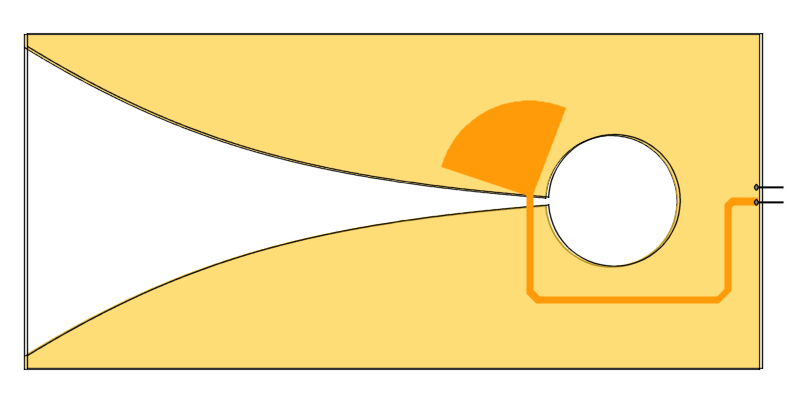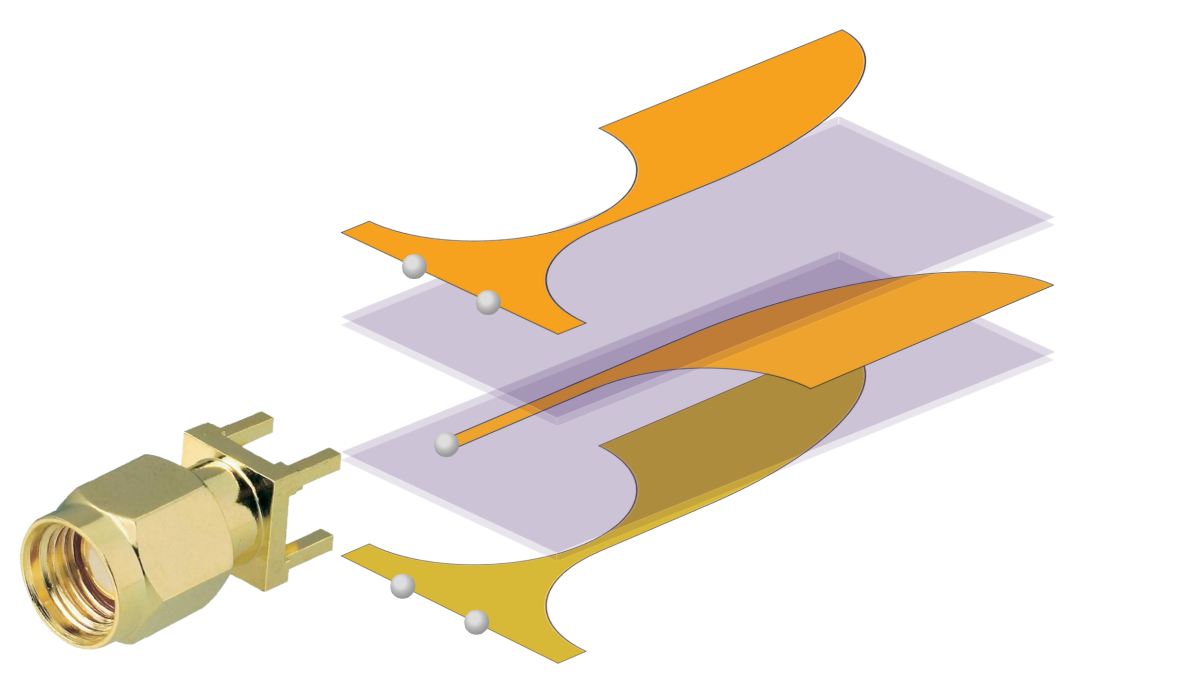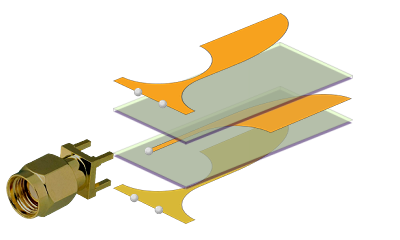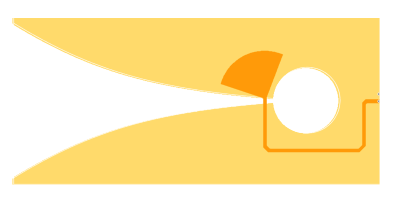Tapered Slot Antenna (Vivaldi- Antenna)

Figure 1: Design of the (coplanar) Vivaldi antenna (The PCB material is shown transparently here.)

(top layer)
substrates
(middle layer)
(bottom layer)
Figure 2: Exploded view drawing of a balanced antipodal Vivaldi antenna

(top layer)
substrates
(middle layer)
(bottom layer)
Figure 2: Exploded view drawing of a balanced antipodal Vivaldi antenna
Tapered Slot Antenna (Vivaldi- Antenna)
The Tapered Slot Antenna (TSA) (also-called: Vivaldi antenna) is an extremely broadband slot antenna (over several octaves), wherein the slot is widened conically. This antenna was presented at the 9th European Microwave Conference (EuMic) in 1979 by P. J. Gibson under the name “The Vivaldi Aerial”.
The Vivaldi antenna can be made of thin copper sheets or simple double-laminated printed circuit board material. Its properties, such as the thickness of the carrier material and its dielectric constant have an influence on the properties of the antenna. A couple of antennas can be made on the same circuit board next to each other as a group antenna.
The antenna itself consists only of the tapered slot, which can be considered as a two-dimensional exponential horn. The feeding of the antenna is on the narrow side slot. The opposite side to the beam direction is short-circuited by a λ/4-stub. To increase the bandwidth of the antenna, this stub may be designed to be circular with a diameter of one-quarter wavelength of the center frequency. The supply line with the circular sector on its end is made on the second printed circuit board level. It has the function to broadband matching of the supply system in stripline technology.
The polarization of a single radiator is linear. The electric field lines are parallel to the printed circuit board material. The the printed boards with the antenna groups can also be nested crosswise for a second plane of polarization. The beam direction of the antenna is the direction in which the conical slot expands. Due to the large bandwidth, this antenna shape is suitable for ultra-wideband applications.
This antenna has 3 main categories:
- In Coplanar Vivaldi antenna two radiator planes are on the same side of the dielectric material. The antenna can be fed by aperture coupling from the other side as depicted in Figure 1.
- The Antipodal Vivaldi antenna is proposed to solve the feeding in coplanar ones. In this type of Vivaldi antenna one of the layers is printed on top and the other one which is tapered in opposite direction is printed on the bottom of the dielectric substrate material. This antenna can be fed easily by soldering the connector to the two sides of the PCB material. This antenna is similar to that described in Figure 2 but without the top layer and its supportive substrate.
- The Balanced antipodal Vivaldi antenna (BAVA) consists of three copper layers. An dielectric layer has been added on top of the antipodal structure and an additional metal plate just like the one in the bottom of the antenna has been printed on top of the newly added layer.

